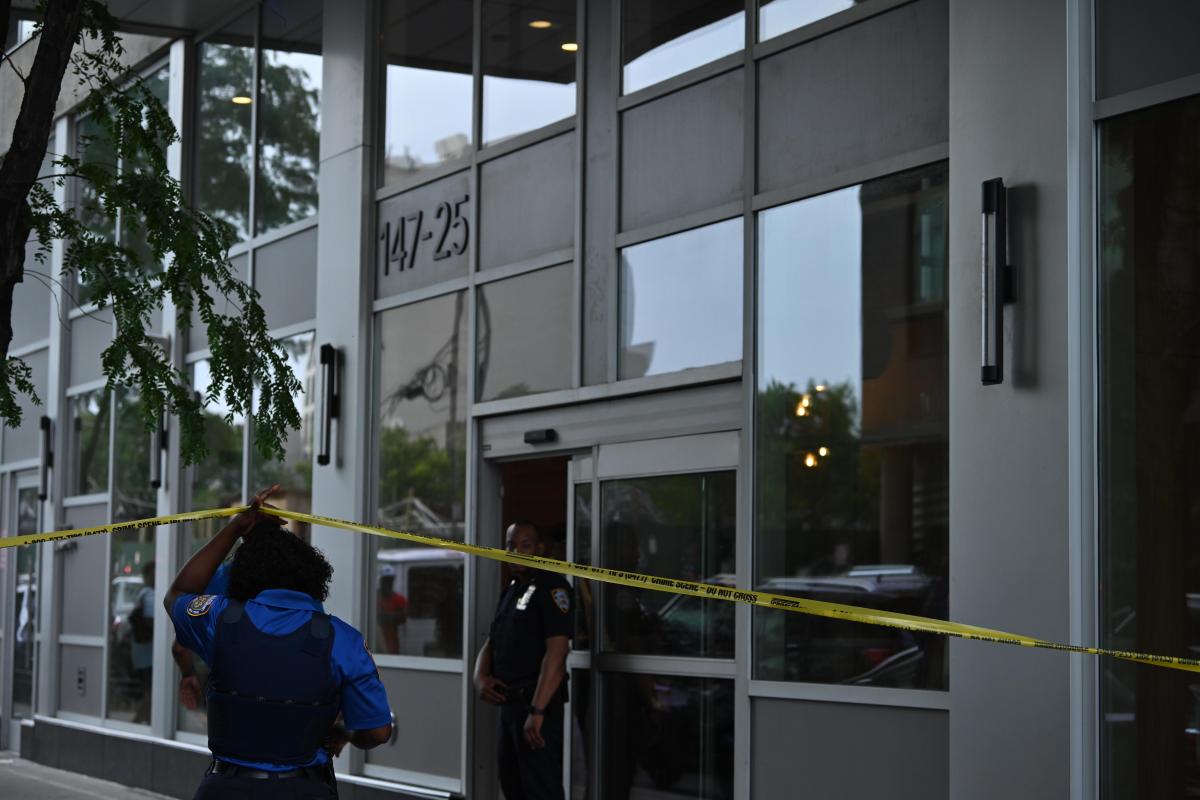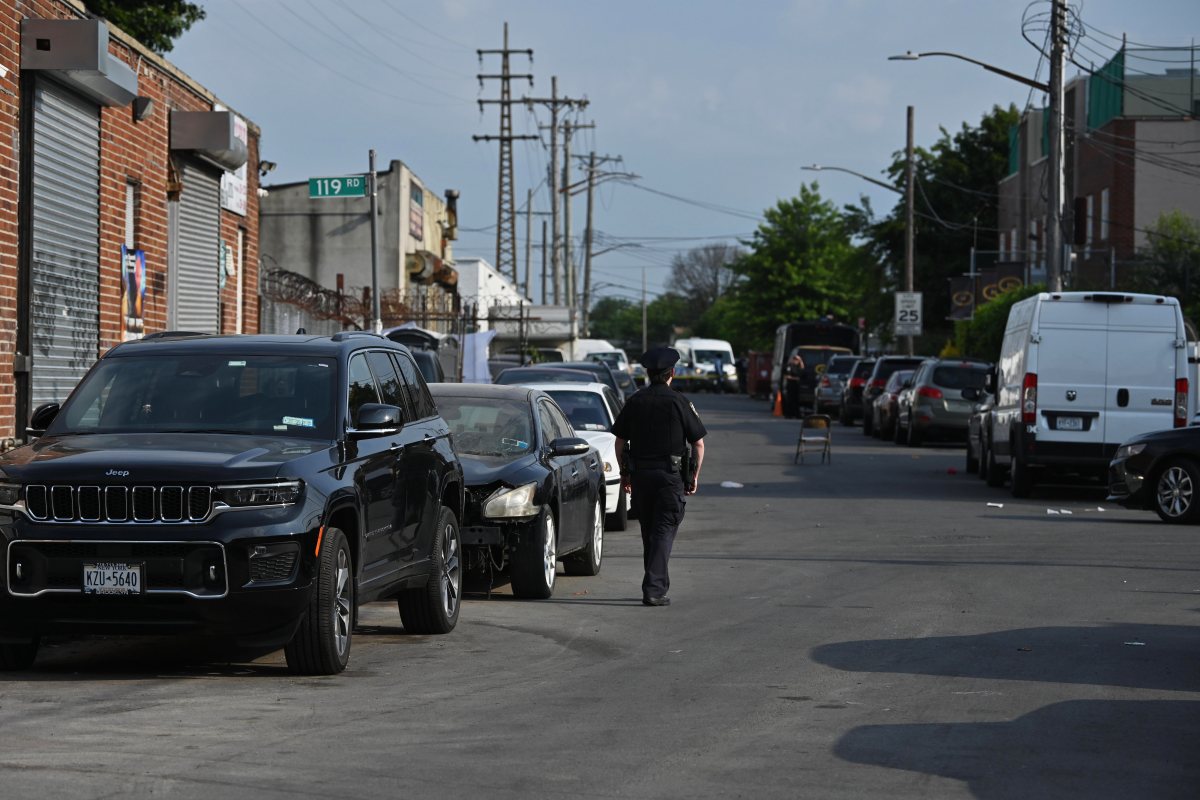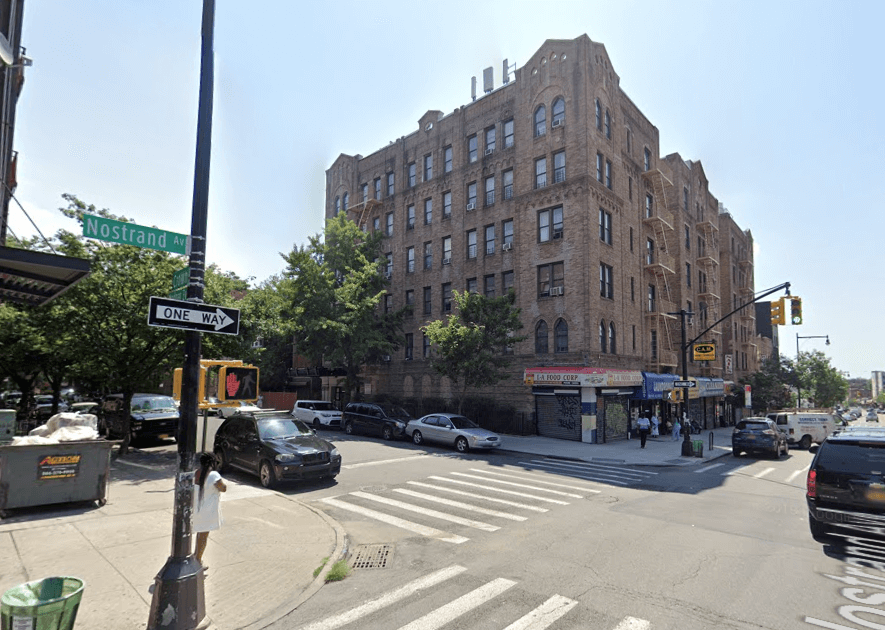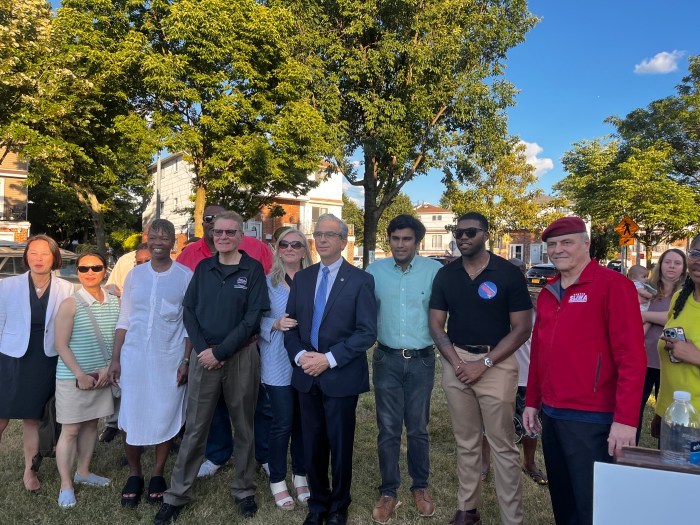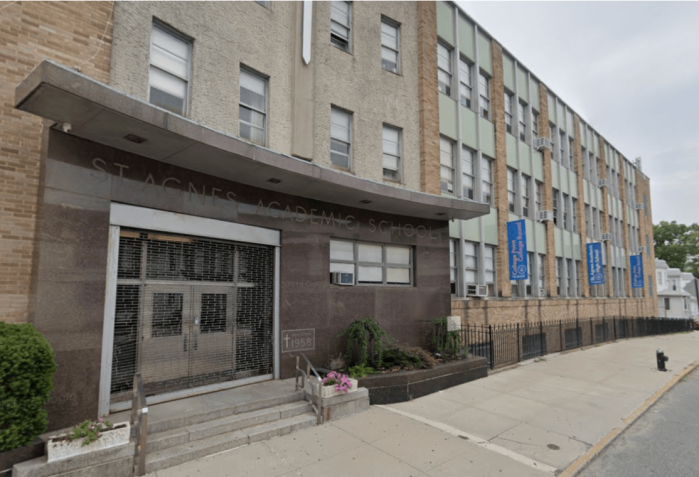Hearing Eyes New Ridgewood Industrial Zone
With the aim of rejuvenating local industry and commerce, a plan to include part of Ridgewood in an “industrial business zone” (IBZ)-which would steer resources to companies in the area-will be debated at a public hearing held by Community Board 5 this Wednesday, June 12, it was announced.

The hearing will take place at 7:30 p.m. this Wednesday prior to Board 5’s regular public meeting at Christ the King Regional High School in Middle Village. The session will be held on the third floor (Door 10) of the CNL Center on the campus located at 68-02 Metropolitan Ave.
Board 5 District Manager Gary Giordano explained the hearing would allow the public to learn about and comment on the planned designation of an IBZ in an area of Ridgewood generally bound by Cypress Avenue, Hancock Street, Irving Avenue and the Long Island Rail Road’s Bay Ridge branch.
This area, which is largely zoned for manufacturing purposes and has had industries in operation for decades, is located in a part of Ridgewood dubbed by community activists as “South of Myrtle Avenue” (SOMA).
Industry in the SOMA area dates back to the Second World War, when hundreds of factories were opened to provide American soldiers with needed supplies for battle, according to Board 5 Chairperson Vincent Arcuri. In the post-war years, he added, many of these factories became textile mills and supported the neighborhood for the better part of three decades.
“The knitting industry became king, and it’s gone,” Arcuri said. Many of the textile mills in Ridgewood were closed in recent decades as companies relocated to other parts of the world.
In recent years, some observers noted, there have been questions as to what to do with many of the industrial buildings in the SOMA area which have been underutilized or vacant as companies closed or relocated. With many of the former factories converted into residential use and the potential for further noncommercial development in the area, Arcuri stated, the time had come to solicit public comment regarding the future of the neighborhood.
“I think if the city’s considering this IBZ extension, that must mean they have some industries which they would want to point toward us,” he told the Times Newsweekly on Monday, June 3. “The city and the board are rolling on this. Normally, they (the EDC) wouldn’t hold a public hearing on this, but we said because of the new uprising in residential development, we should open it up to the public and hear what everyone has to say.”
Ted Renz, executive director of the Ridgewood Local Development Corporation (RLDC), told the Times Newsweekly on Monday an application was submitted to the city’s Economic Development Corporation last year recommending that the proposed IBZ area in Ridgewood be added to the Maspeth IBZ operated by the Maspeth Industrial Business Association (MIBA).
He noted the application was moved forward as the city launched its second round of applications for the creation of new IBZs across the five boroughs. A study conducted jointly by the RLDC, Board 5 and The New School in 2008 found that the SOMA section of Ridgewood remains a viable industrial sector-as it is close to public transportation and a vast workforce-and should be recommended as a potential IBZ when the city considers new applications for such zones, Renz added.
The Maspeth IBZ already includes an industrial section of northern Ridgewood generally bounded by Metropolitan Avenue, Starr Street, Seneca Avenue, Troutman Street, Cypress Avenue, Flushing Avenue and Onderdonk Avenue. Additionally, a portion of the Blissville section of Long Island City (generally bounded by Review Avenue, Greenpoint Avenue, the Newtown Creek and Laurel Hill Boulevard) is part of the Maspeth IBZ.
“We wanted to be included since they (the MIBA) have the expertise in industrial matters,” Renz told this newspaper on Monday morning.
More information needed
However, RLDC President Paul Kerzner informed the Times Newsweekly Monday afternoon he requested that the application be withdrawn until the organization has additional information regarding building use in the proposed IBZ area. To that end, he asked Renz to quickly conduct a land use study in the area.
Claiming that the last survey of the area was conducted in 2000- when new zoning regulations were designed and implemented for Ridgewood- Kerzner stated in the last 13 years, “there had to have been a number of those [industrial] properties which have gone residential.”
“I suggested to Ted that we pull out the application and take an inventory of the properties in the target area, find out how many would still be eligible for the IBZ and make a determination on how to go forward,” Kerzner told this paper. He also requested that Board 5 hold off on its public hearing until such an inventory was undertaken by the RLDC.
Kerzner stated that a host of questions must be answered before moving forward with the IBZ application for Ridgewood, including the legality of former industrial sites that have been converted into residences.
“Those questions have to be answered before you go ahead and ask for a designation from the city for help,” he added. “I think one loses credibility if you don’t have accurate information on which you’re basing this request. It may be totally justified, but I can’t say this at this point. I hope it is, because the area could use it. But first, let’s do our homework.”
In speaking with the Times Newsweekly on Tuesday, June 4, Renz stated the RLDC is exploring options with several local colleges on recruiting interns to conduct a follow up land use inventory study based on the data gathered by The New School in the 2008 study of the SOMA area.
“I totally agree with Paul that we need updated, comprehensive data,” he said, but added that the RLDC should press forward with its IBZ application, as delaying the process could jeopardize Ridgewood’s chances of getting the zone.
“We can do both at the same time. If we have the data but don’t have the designation, we’re not going to be able to offer all the programs that an IBZ has,” Renz stated. “Manufacturing jobs are very important because they are generally speaking offer wages that are 30 percent higher than retail jobs. They are truly head-ofhousehold salaries which offer a better lifestyle.”
What an IBZ does
Launched in 2006, each IBZ in New York City offers financial support ranging from tax credits to government grants and assistance in securing services from various governmental agencies, explained Jean Tanler of the MIBA.
Adding part of the SOMA area of Ridgewood to the Maspeth IBZ was welcomed by Tanler, who said it would provide “a great way to encourage growth among businesses in the industrial area” while also attracting new companies to come to Ridgewood.
“The idea is to preserve industrial businesses in that area and preserve local jobs, as well as bringing in new businesses,” she told the Times Newsweekly in a Monday interview. Some companies which relocate to an IBZ are eligible for city tax credits, she added.
The Maspeth IBZ was launched just before the Great Recession, but in the years following the national economic downturn, business in the zone has experienced “a slow, steady growth,” Tanler added. New businesses are coming into the area, but are taking up reduced amounts of space.
“There’s certainly a very high demand for industrial space, but just not the same large amount of square footage,” she said, adding that the proposed IBZ section in Ridgewood can prove particularly attractive to businesses as there are large amounts of manufacturing space which could be subdivided.
In a press release last Friday, May 31, announcing the public hearing, Giordano pointed out that properties in an IBZ which are zoned for manufacturing would most likely be prevented from possible conversion for residential purposes. Additionally, any property “in the zone now used for legal residential living … can continue to be used residentially if an IBZ is approved.”
Arcuri stated that two Board 5 committees-the Zoning and Land Use panel and the newly-formed Industrial Development Committee- would meet jointly to consider the proposal and the public’s feedback. It is anticipated that the committees will present a joint recommendation for or against the plan at Board 5’s July meeting.
Additional information on the Board 5 meeting this Wednesday night can be found on Page 4.










